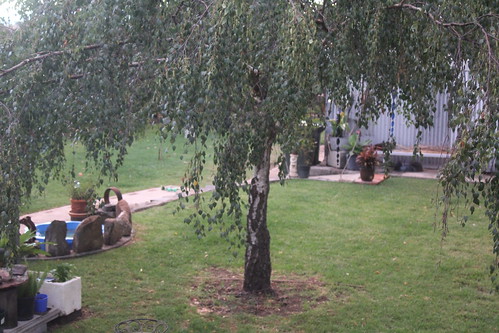Some believe the word to be of Teutonic origin; others ascribe it to the Welsh. A few trace it to the Gaelic druidh, which means "a wise man" or "a sorcerer." In Sanskrit the word dru means "timber."
Excerpt from The Secret Teachings of All Ages by Manly Palmer Hall.
(Welsh: derwydd; Old Irish: druí; Scottish Gaelic: draoidh)
Following the Roman invasion of Gaul, the druid orders were suppressed by the Roman government under the 1st century CE emperors Tiberius and Claudius, and had disappeared from the written record by the 2nd century.
Many years ago I lived in a street named Dryade Street. I had no idea of the street name meaning at that time and I even went so far as to ponder what a funny name for a street.
It is a genuine satisfying feeling when you find out the origin of something, even if it is just a street name. Dryades and Druids ... who would have known.
There is much more to know of these Dryades.
DRYADES (Dryads) and OREIADES (Oreads) were the nymphs of trees, groves, woodlands and mountain forests. They were the spirits of the oaks and pines, poplar and ash, apple and laurel. For those known as Hamadryades, a tree was born with her birth to which her life was tied. While the tree flourished, so did its resident nymph, but when it died she passed away. There were several types of Dryades associated with particular trees:
(1) The Meliai (Meliae) were nymphs of the ash-trees. They were born when Gaia (Gaea, the Earth) was impregnated by the blood of the castrated Ouranos (Uranus, the Sky). They were wed by the men of the Silver Age--in the time before the first woman was created--and from them mankind was descended.
(2) The Oreiades (Oreads) were nymphs of the mountain conifers. The eldest of these were daughters of the five Daktyloi (Dactyls) and five Hekaterides (Hecaterides). Subsequent generations were descended from these elder Oreiades and their brother Satyroi (Satyrs).
(3) The Hamadryades (Hamadryads) were the nymphs of oak and poplar trees. They were usually connected with river-side trees and sacred groves.
(4) The Maliades, Meliades or Epimelides were nymphs of apple and other fruit trees and the protectors of sheep. The Greek word melas--from which their name derives--means both apple and sheep.
(5) The Daphnaie were nymphs of the laurel trees, one of a class of rarer tree-specific Dryad. Others included the Nymphai Aigeiroi (of black poplars), Ampeloi (of grape vines), Balanis (of the ilex), Karyai (of the hazel-nut), Kraneiai (of cherry-trees), Moreai (of the mulberry), Pteleai (of elm trees), and Sykei (of fig trees).
Oreiades were nymphs of the mountains, Alseides of the sacred groves, Aulonides of glens, Napaiai of vales. Click HERE to find out more on this most interesting subject.
Images @ Eminpee Fotography



No comments:
Post a Comment